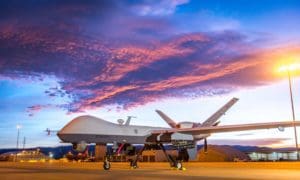
In the defense sector, remotely piloted systems have continued to transform military reconnaissance and surveillance missions. And as the technology grows more modern, so do the terms we use to describe them.
AUVSI recently replaced all mentions of “unmanmed” to “uncrewed.” For example, an “unmanned aerial vehicle (UAV)” will now be referred to as an “uncrewed aerial vehicle (UAV).” This move toward greater diversity and inclusion is both bold and respectable. While the shift has only occurred within AUVSI’s publications so far, there’s a good chance it will become industry standard in the future.
Since we’re known for staying ahead of the curve, it’s a good time to revamp our previous UAV guide.
Here’s a definitive list of modern definitions in the UAV space:
UAV: Uncrewed Aerial Vehicle – a broad term for any remotely piloted aircraft. Mainly used to describe unarmed aircraft that perform reconnaissance and surveillance missions (i.e., “eyes in the sky”)
UAS: Uncrewed Aerial System – a complete UAV system that includes ground-based terminals and control stations, remote video terminals and other equipment needed to operate the aircraft. Typically, UAS includes multiple UAVs and control units.
UCAV: Uncrewed Combat Air Vehicle – a UAV designed to carry weapons to perform air strikes. Only a handful of countries produce UCAVs.
UGV: Uncrewed Ground Vehicle – a ground-based UAV. Historically, UGVs are employed for dangerous missions like demolition and de-mining operations
MAV: Micro Air Vehicle – a UAV small enough to fit in the palm of your hand. Think of it like a short-range spy drone to peer around corners, behind walls, or over mountain ridges
UAVs can also be categorized by type. This includes Medium-Altitude Long-Endurance (MALE) like the MQ-9 Reaper and High-Altitude Long-Endurance (HALE) like the RQ-4 Global Hawk – both of which house dB Control products. Specifically, the Reaper’s synthetic aperture radar (SAR) systems are powered by TWTAs manufactured right here at dB Control. Since a Reaper’s operational altitude is 50,000 feet, the SAR system onboard must maintain very high power so that high-resolution images can be captured at ground level. And considering that the Reaper can fly nearly 1,200 miles over the course of 40 hours, reliability of the radar system is nonnegotiable.
As UAV capabilities expand, they will demand reliable, compact, powerful products – and dB Control will continue to meet those demands with mission-critical, customizable TWTAs, MPMs and power supplies.
Questions? Contact us today.


